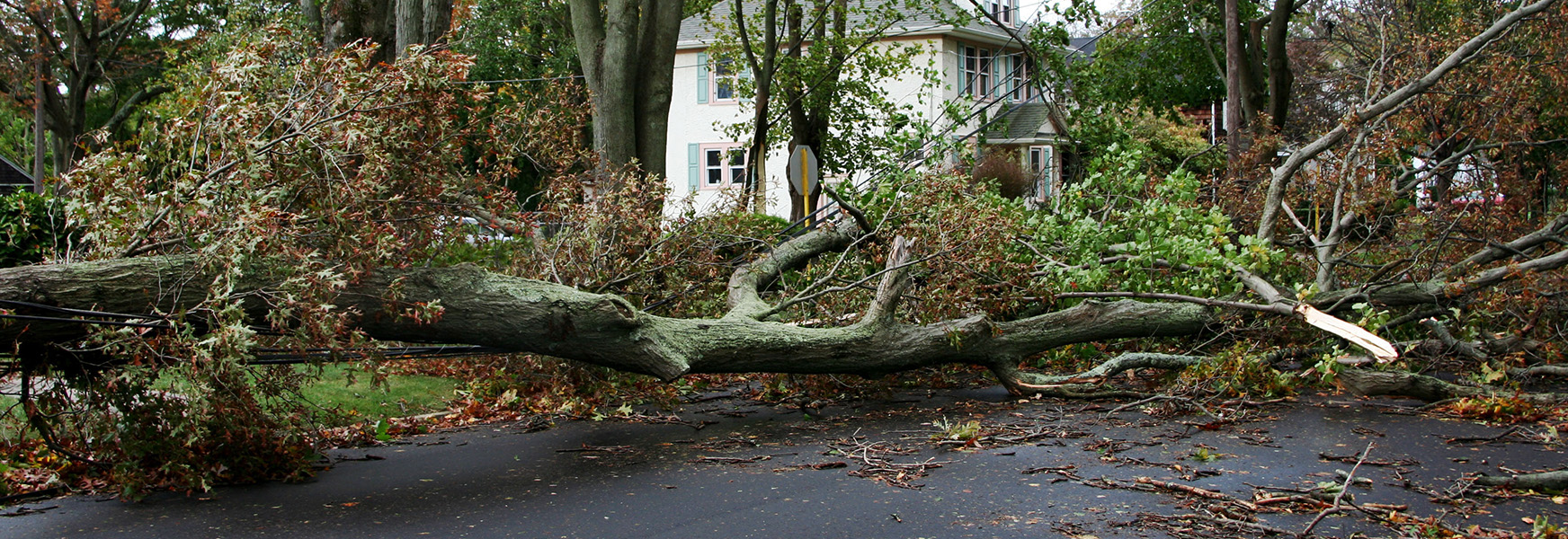Weathering Storm Cleanup Safety

Most everyone who is responsible for maintaining a workplace premises, or who owns or rents property, is familiar with yard work. Over the course of the year, lawn, weeds, leaves, sand, and trash all conspire to move to places where we do not want them. The process of cleanup can be rewarding for some and tedious for others. However, when a storm hits, the stakes for injury prevention are much higher.
As we know from recent hurricanes, the hazards posed by a storm itself are significant. OSHA provides some great information for hurricane and tornado planning. Most hazards a storm brings are obvious and can be very serious: high winds, heavy rain, flooding, power outages, etc.
The hazards the storm leaves in its wake are sometimes less obvious, but no less serious.
Flooding: The sky can be clear, but water can still be on the rise. Storm surge and downstream hazards after streams and rivers flow over banks pose significant hazards even after all the wind and rain have passed. Flooding makes changes to the landscape that may be hidden under the water. Holes can appear where none were before, roadways can be undermined, and stable soil can become saturated and unstable. These hazards remain lurking under the surface until they are exposed when the water recedes.
Water damage: Separate from but related to flooding are the hazards that grow out of standing water or what is left after the water has receded. Standing water can breed mosquitoes or other insects that transfer microbes and other nasties that can cause illness.
Building stability: Flooding and high winds can cause structures to become unstable. Walking over a debris pile is one thing; re-entering a structure that has been flooded or damaged by high winds is another. Weakened or damaged roof sheathing, unsecured power or gas lines, even damaged or unstable interior walls are all hazards that can be present after the storm blows past.
Tree damage: Downed, uprooted, or broken trees pose hazards that are both obvious and sometimes invisible to the untrained eye. The hazards from a treetop that has been sheared off in the storm and lying in the yard can be obvious. However, ones that have been uprooted and tilting, leaning against each other, on or over a structure, or entangled in powerlines, can be tricker to navigate and are best left to the professionals.
Airborne hazards during cleanup: Dust during cleanup is inevitable, but not all dust is equally hazardous. Most can cause some discomfort or illness when inhaled. Silt and mold can carry pathogens that are dangerous if breathed. Respirable silica or asbestos can also be present when cleaning up from a large storm. Using a combination of ventilation, wet methods, and PPE (Personal Protective Equipment) can control the risk.
Hazardous atmospheres: Generators, heaters, and other gas-powered tools can be lifesavers in the aftermath of a storm. However, the exhaust from these can be deadly if the tool is used improperly or without adequate ventilation. The manufacturer’s instructions for each tool are the best place to start.
Working alone: While working alone is not always a bad thing, doing it during storm or disaster response is inadvisable. The unpredictability of the hazards that you may encounter during storm cleanup and response should make working in pairs or groups an integral part of your plan.
Finally, planning is the key to any response. The outcomes of the worst natural disasters have all had some preparedness component missing. However, if anything, the history of natural disaster response is a tool to learn from and make changes with. OSHA offers a Fact Sheet that gives a down-and-dirty view of common hazards and controls during disaster cleanup and recovery to aid in emergency planning.
OSHA and FEMA have excellent information about the hazards encountered during hurricane and tornado response and recovery. Whether you are a business owner or someone who wants to be prepared, OSHA’s Hurricane Matrix and FEMA’s ready.gov pages are a great place to start for building a storm response and survival plan.
Additional information can be found in these MEMIC Blogs:

